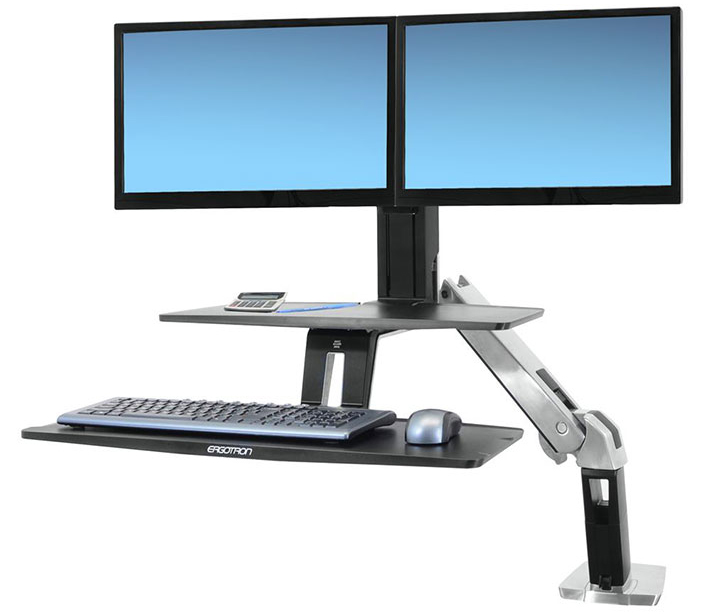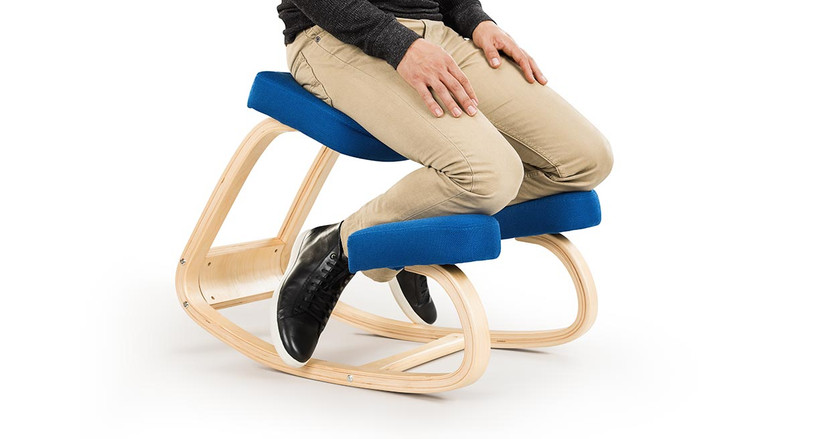In recent years we’ve been hearing the trope “sitting is the new smoking.” We all know the benchmark of smoking dangers. So compared to that, is sitting really that dangerous?
Yes!

For the first time, the 2020 World Health Organization guidelines on physical activity recommended reducing sedentary behaviors owing to their health consequences.
A 2011 study documented 800,000 people and their sitting habits. The study found that people who sit the most, compared to people who sit the least, have a greater risk of disease and death:
• 112% increased risk of diabetes.
• 147% increased risk of cardiovascular events like heart attack and stroke.
• 90% increased risk of death from cardiovascular events.
• 49% increased risk of death from any cause.1
It can even increase your risk for certain types of cancer, though results have not been consistent in that respect.2
Yikes! Why should it be bad for us?
Blood flow slows down. This can allow fatty acids to build up in the blood vessels, leading to heart disease.
Sitting for extended periods of time, regularly may lead to insulin resistance which can cause type 2 diabetes and obesity—2 major risk factors for heart disease.
A 2018 study found that 82% of people who suffer from blood clots, sat for a significantly greater amount of time than the remaining 18%.
Your body’s ability to process fats is slowed. When you sit, your body’s production of lipoprotein lipase (an enzyme essential for breaking down fat) drops by about 90%. When your body cannot break down fat, it is stored instead.
However, associations between occupational prolonged sitting and health outcomes are not consistently demonstrated. Prospective studies have generally found that occupational prolonged sitting increases the risk of diabetes, for example, but not cancer. Similarly, an analysis found that associations between prolonged sitting and health outcomes are dependent on sex. In addition, the health risks of prolonged sitting have been shown to be independent of leisure-time physical inactivity.
Working long hours shares similarities with prolonged sitting in terms of health impacts, demonstrating dose-response associations with coronary heart disease and stroke. Thus, one would expect similar, if not worse health consequences for prolonged occupational sitting.
Today (Jan 2024) a brand new study came across my desk and it has a tale to tell. It was a large study—nearly half a million individuals, followed over a dozen years or so. In a nutshell, individuals who predominantly engaged in sitting at work exhibited a higher risk of mortality from all causes (16%) and cardiovascular disease (34%) compared with those who predominantly did not sit. The results were adjusted for sex, age, education, smoking, drinking, and body mass index.3
With more and more people working at home, sitting in front of a computer for hours at a time, we need to take a closer look…
What To Do?
Many of us, I know, spend far too much time at the computer, reading, writing and perhaps watching videos. For some it can be up to 6 hours a day, or more. Can we do something to mitigate the damage caused by endless sitting. You can STAND to work at our computer! Really!
I had a set up years ago, that had my computer at chest height. The keyboard was actually BETTER placed than typically, at a desk workstation—about level with my waist. The screen was opposite my eyes, while standing. I worked, literally, standing up.
It really does engage your whole body, just to stand; not just your legs but arms, spine, pelvis, head and neck. Everything. So it is a subtle form of continuous exercize and it keeps you fit.
I can’t remember what happened to that work station but clearly, it vanished some time ago. I’d almost forgotten about it, till this article. But I do remember the main negative that worried me from the get-go: varicose veins! I don’t have them, thank goodness. But as an MD I do know that people who are on their feet the whole working day are at risk for developing this unpleasant condition.
For example a 2005 Danish study, following 2939 men and 2708 women aged 20–59 years, found the pooled risk was 1.78.4 That’s moving towards double.
Don’t Stand All The Time
I’m going to recommend a stand up work station (no commission). Standing desks have been proven to increase brain function, creativity, and productivity. But in view of the previous section, I think it advisable to spend some of your work time standing and some of it sitting.
 Courtesy of Ergotron (ergotron.com)
Courtesy of Ergotron (ergotron.com)
The best standing work stations are those that can be switched to sitting down too, such as lowering the boom and trays.
Ergonomic Kneeling Chair
This is definitely worth consideration. It’s a fine compromise between standing and sitting. It’s kneeling!
You have the comfort of sitting but your body is forced to do far more to keep its posture, because there is no chair back (illustration).
 Courtesy of UpliftDesk (upliftdesk.com)
Courtesy of UpliftDesk (upliftdesk.com)
Manufacturers claim lower back pain relief, improved circulation, and more energy with an active sitting solution that encourages proper posture and strengthens muscles. The UpliftDesk Ergonomic Kneeling Chair properly aligns your back, shoulders, and neck, and engages your core so you stay active but comfortable.
The kneeling chair allows you to shift your weight between your butt and your shins to vary your position. Sit on the top seat with your legs tucked back, or sit more traditionally with your feet on the floor and enjoy the rocking motion enabled by the curved bottom rockers.
Simple Ideas
Other ideas include getting up at least every hour and move. Stand, walk around, stretch. You can even download apps onto your phone to remind you!
Watch your posture. If you must sit, keep your shoulders back, your chin tucked, and your stomach pulled toward your spine in order to keep muscles engaged, bones aligned, and circulation flowing.
Commit to exercising every single day. Go on a walk during lunch. Plan to attend a fitness class.
Choose the far parking spot and walk to the store doorway. Every minute of physical activity counts!
Don’t sit so much.
To Your Good Health, Prof. Keith Scott-Mumby
The Official Alternative Doctor
References:
- van Uffelen JGZ, Wong J, Chau JY, et al. Occupational sitting and health risks: a systematic review. Am J Prev Med. 2010;39(4):379-388.doi:10.1016/j.amepre.2010.05.024
- Moore SC, Lee IM, Weiderpass E, et al. Association of leisure-time physical activity with risk of 26 types of cancer in 1.44 million adults. JAMA Intern Med. 2016;176(6):816-825. doi:10.1001/jamainternmed.2016.1548
- Occupational Sitting Time, Leisure Physical Activity, and All-Cause and Cardiovascular Disease Mortality. JAMA Netw Open. 2024;7(1):e2350680. doi:10.1001/jamanetworkopen.2023.50680
- Tüchsen F, Hannerz H, Burr H, Krause N. Prolonged standing at work and hospitalisation due to varicose veins: a 12 year prospective study of the Danish population. Occup Environ Med. 2005 Dec;62(12):847-50. doi: 10.1136/oem.2005.020537. PMID: 16299093; PMCID: PMC1740939




